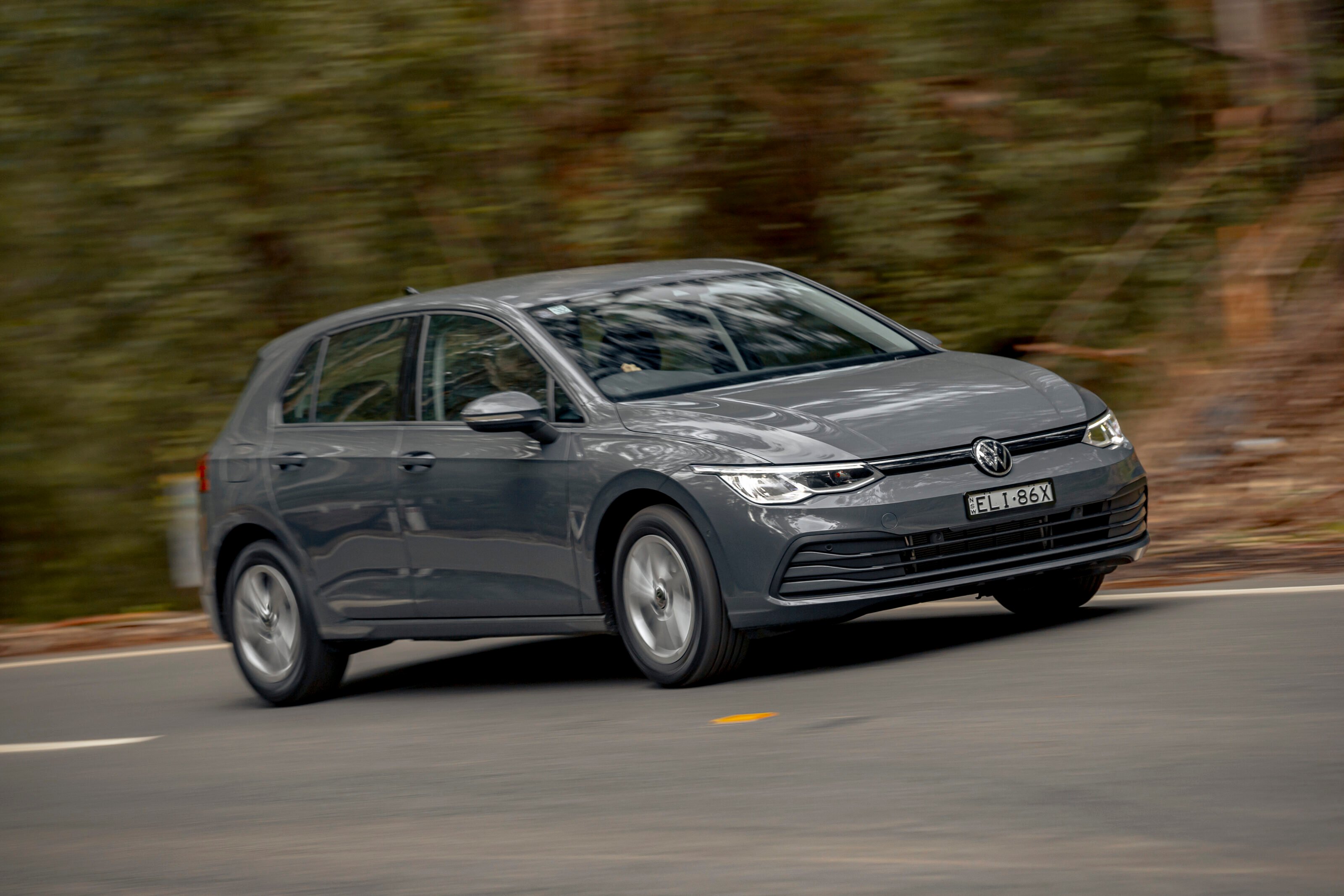Score breakdown
Things we like
- Loaded safety kit
- Efficient powertrain
- Comfort
Not so much
- Higher entry price
- Ergonomic issues
- Staid styling
The days of the sub-$20K small hatchback seem to be well and truly gone. Of course, inflation and technological progression are key factors in this, but so is safety. And, quite rightly, it’s something that means a lot to buyers in this segment. It’s a scenario that consequently means it’s not unusual to see a humble hatch stacked with more active and passive safety kit than a larger luxury car.
This seems to be the philosophy at Volkswagen with its eighth-generation Golf. Even the press paraphernalia has “Safety and Security” listed first on the spec sheet. It’s an important move to include the company’s IQ.DRIVE package as standard in the base model, too.
As a result, the price starts at $31,950 (excluding on-road costs) for the eight-speed automatic version we have here – a $2600 premium over the six-speed manual. You can read reviews on the Golf Life ($34,250) and R-Line ($37,450) to see what we think of the other models in the range.
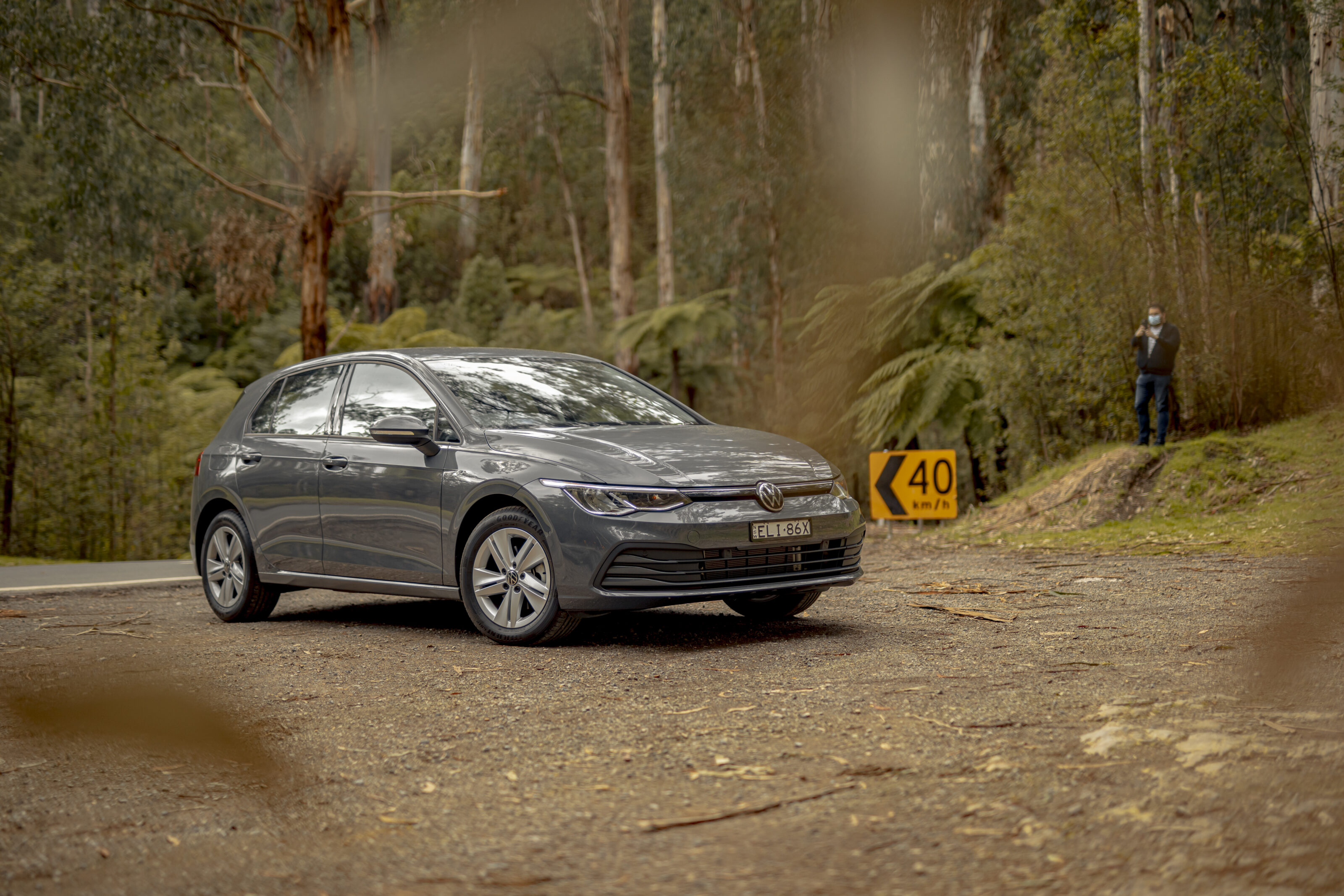
So what does IQ.DRIVE suite come with? In truth, it’s a very long list, but the highlights include: Travel assist (which also controls steering inputs), AEB with pedestrian and cyclist detection, adaptive cruise control with stop/go function, lane assist, driver fatigue alert, rear traffic alert, park assist (self-parking) as well as parking sensors and a reversing camera – which pops out from under the VW badge.
Basically, the entry-level Golf now has more active safety as standard than some of the Volkswagen Group’s more fancied marques. Emergency assist, exit warning system and automatic high-beam assist are the only active systems you must pay more for by buying the Life or R-Line. Eight airbags and two rear ISOFIX points account for the passive measures and the range is covered by a five-star Euro NCAP safety rating.
Basically, the entry-level Golf now has more active safety as standard than some of the Volkswagen Group’s more fancied marques.
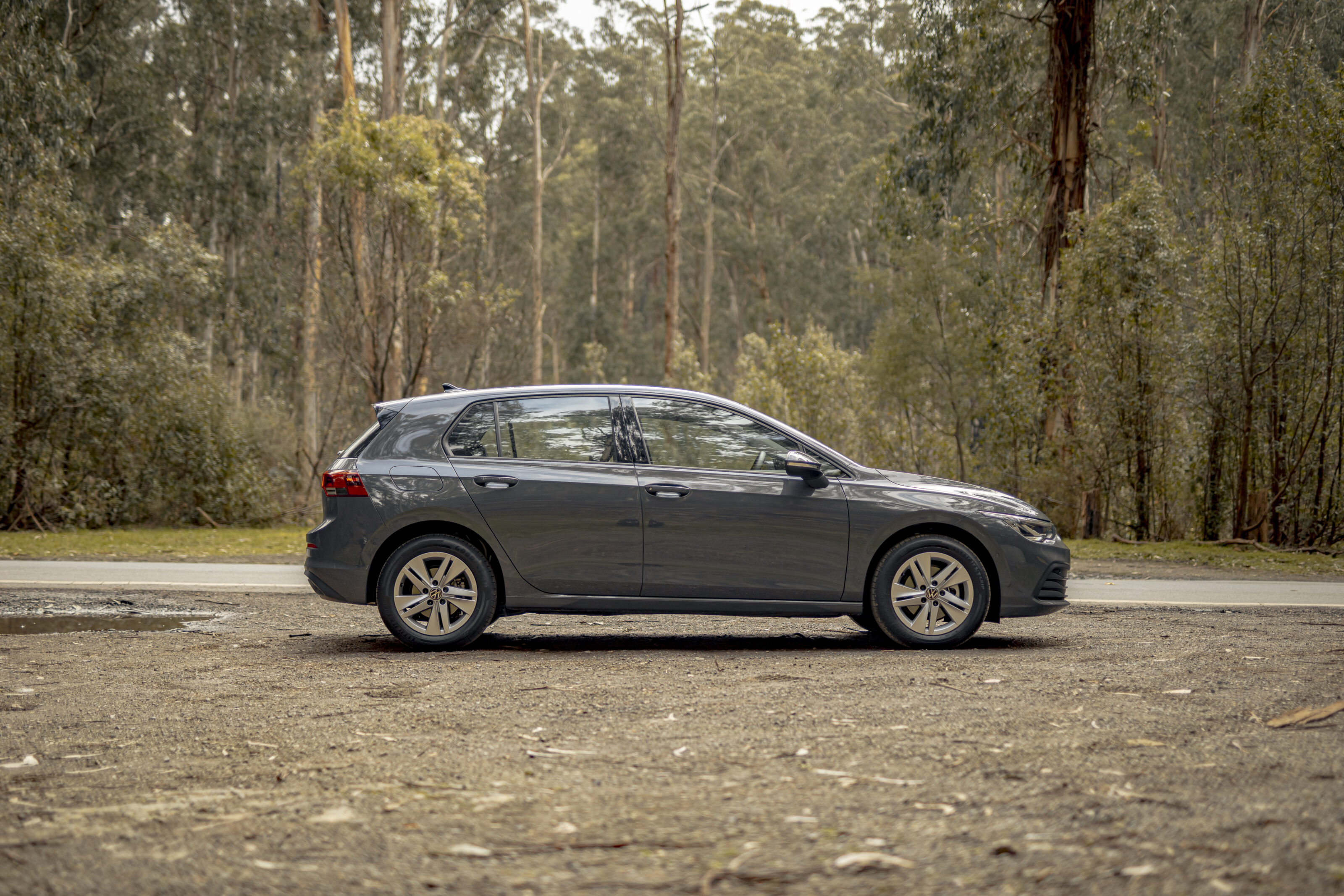
It’s a bit of a revolution in terms of the approach to safety, then. But for the eighth generation, aesthetics are more evolutionary. Hence, those familiar with a Golf aren’t going to mistake it for anything else. And ‘Golf’ is even spelt out in big letters on the boot (under the new VW logo) for anyone unawares.
The conservative styling is handsome and inoffensive, especially in the test car’s Dolfin Grey metallic hue (a $600 option), while LED headlights and taillights are standard. The 16-inch Norfolk wheels are fitted with chubby Goodyear rubber.
Where the bold moves appear are within the cabin. Yes, the doors still ‘thunk’ and the perceived build quality remains. It still looks and, for the most part, feels like a premium product with high-grade materials used where it matters – this is a Golf, after all.
Storage areas are rubber-lined, which only adds to the up-market ambience, while there are several points to stow items around the cabin. However, the pragmatic ergonomics of old have been replaced with VW’s take on the buttonless cabin. And there are some snags.
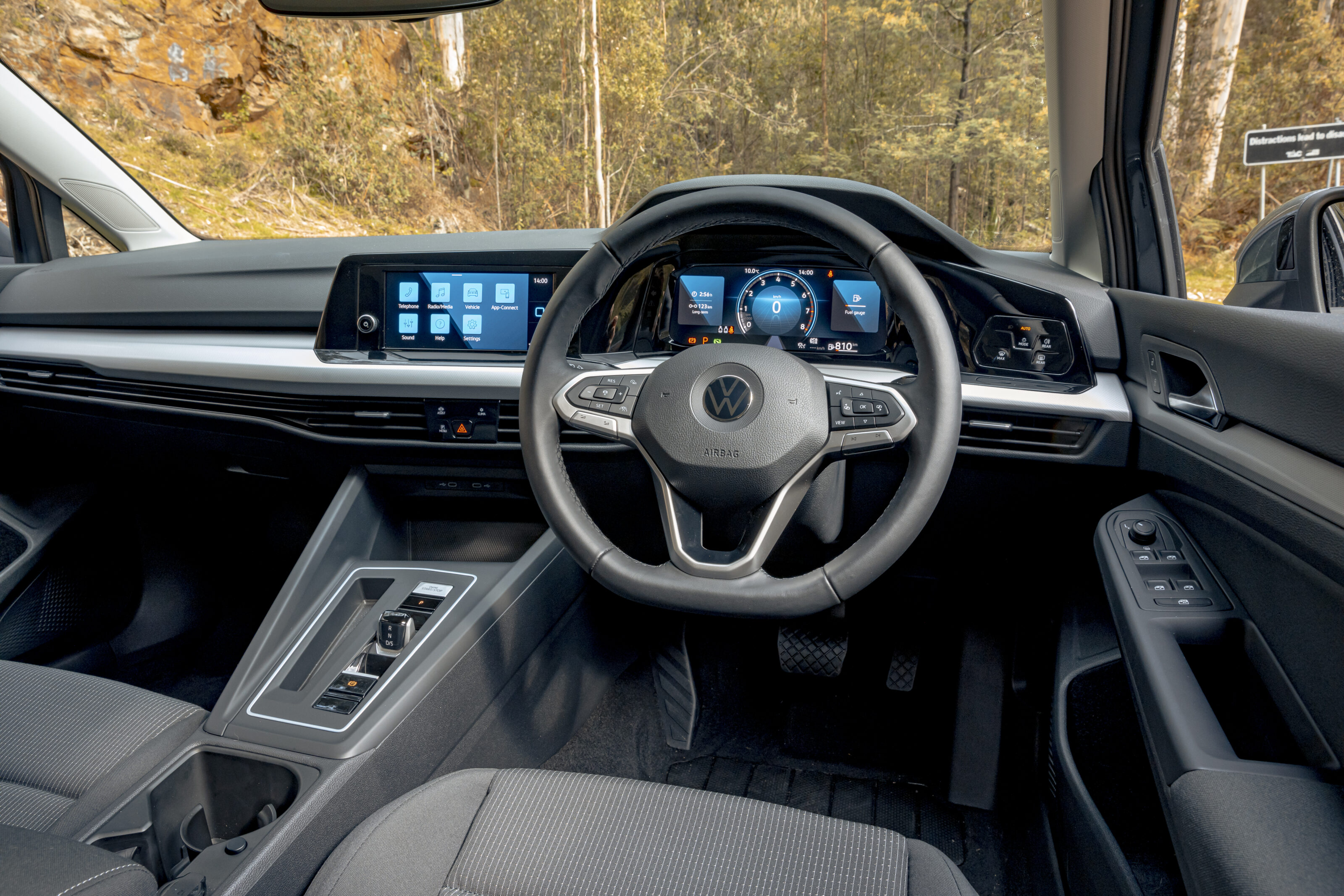
In terms of design, it checks out. However, in practice, menial adjustments like changing the climate control now become tasks requiring multiple inputs. Sans three shortcuts on the dash to the assistance systems, climate controls and park assist, most functions are manipulated via the 8.25-inch touchscreen. And there is no haptic feedback to give any assurance you’ve touched icons correctly. ‘If it ain’t broke, don’t fix it’ must not translate well into German.
Opting for the base model offers a surprising advantage when it comes to the steering wheel – physical buttons. All are clear and concise with a positive, old-school feel to them. In fact, it’s a tactile steering wheel with rake and reach adjustment, too. Controls for the auto headlights and demister reside in another touch-sensitive panel beside the instrument panel.

The 10.25-inch digital instrument cluster is a nicety, given it is standard fit. While not configurable for this model grade, the legibility is high and the information available is detailed. The graphics used are crisp and modern, while the central infotainment display is responsive. It’s easy to navigate the various folders and menus.
Apple CarPlay and Android Auto are standard, but you’ll need to spend more within the Golf range to use those features without connecting via the USB-C ports (four in total). There is no wireless charge pad either and, at this price point, it seems a little cruel not to include these features.
Opting for the base model offers a surprising advantage on the steering wheel – physical buttons with a positive, old-school feel to them

Given the 1789mm height and 2636mm wheelbase, the Golf is spacious and airy inside. Headroom in the back is generous, even for adults, while toe and legroom is generous. Visibility is also a strong point and easily outpaces some rivals – especially for rear three-quarter vision. It certainly makes car parks and general city driving less taxing with minimal blind spots.
A delight for rear-seat passengers is the surprise inclusion of not only air vents, but tri-zone climate control. And like up front, the door cards gain felt-lined bins so that the items they hold don’t cause rattles. However, there is no central armrest with extra cup holders, no map pockets and no cubby hole through to the boot.
Yet, there are small design touches that make you smile; like the lip on the 60:40-split rear seats to stop the seatbelt from moving when you have the pews stowed. In that configuration, there’s 1230 litres of cargo capacity and 374 litres when the rear seats are in place. A moveable floor creates a flat load bay and hides a space-saver spare wheel should you need it on the open road.

With the tried and tested MQB underpinnings, that’s somewhere you should take the Golf. Utilising a multi-link rear axle suspension setup (instead of a cheaper torsion beam) and MacPherson struts up front, the ride quality is impressive. It dispels city potholes with aplomb and has big-car waft at speed. The chunky sidewalls of the 205/55 Goodyear Efficient Grip tyres help here, too, and offer decent roadholding.
It feels like VW has chosen relaxation over engagement, so the damping doesn’t always quell mid-corner rebound movements as deftly as you’d expect. However, there is a GTI in the range for a reason. The dynamics are safe and confidence-inspiring, which is matched by steering that is light with a pleasing level of natural tactility. If you’re after something a little racier, the R-Line gains 15mm lowered suspension.

Opting for the R-Line doesn’t afford more grunt, though. All non-GTI Golfs are powered by a 1395cc four-cylinder turbo petrol engine with 110kW (5000rpm) and a meaty 250Nm. The Newton count is important as it endows the Golf with plenty of pulling power – and from as low as 1500rpm (to 4000rpm). It’s a very enjoyable powertrain.
The 1.4-litre turbo aids real-world driving in the sense that you don’t have to go searching for the redline to get meaningful performance. It’ll reach 100km/h in 8.5 seconds, which isn’t shabby for the class, while overtaking grunt isn’t left wanting. It’s a refined unit and doesn’t sound stressed, with overall NVH levels well suppressed.
What is new for the eighth-gen Golf is a move away from a dual-clutch transmission to an eight-speed torque-converter automatic. And fans of German engineering brace yourself because it’s a Japanese-built Aisin unit. You also operate it through a new lever that takes a lot of inspiration from the 992 Porsche 911.
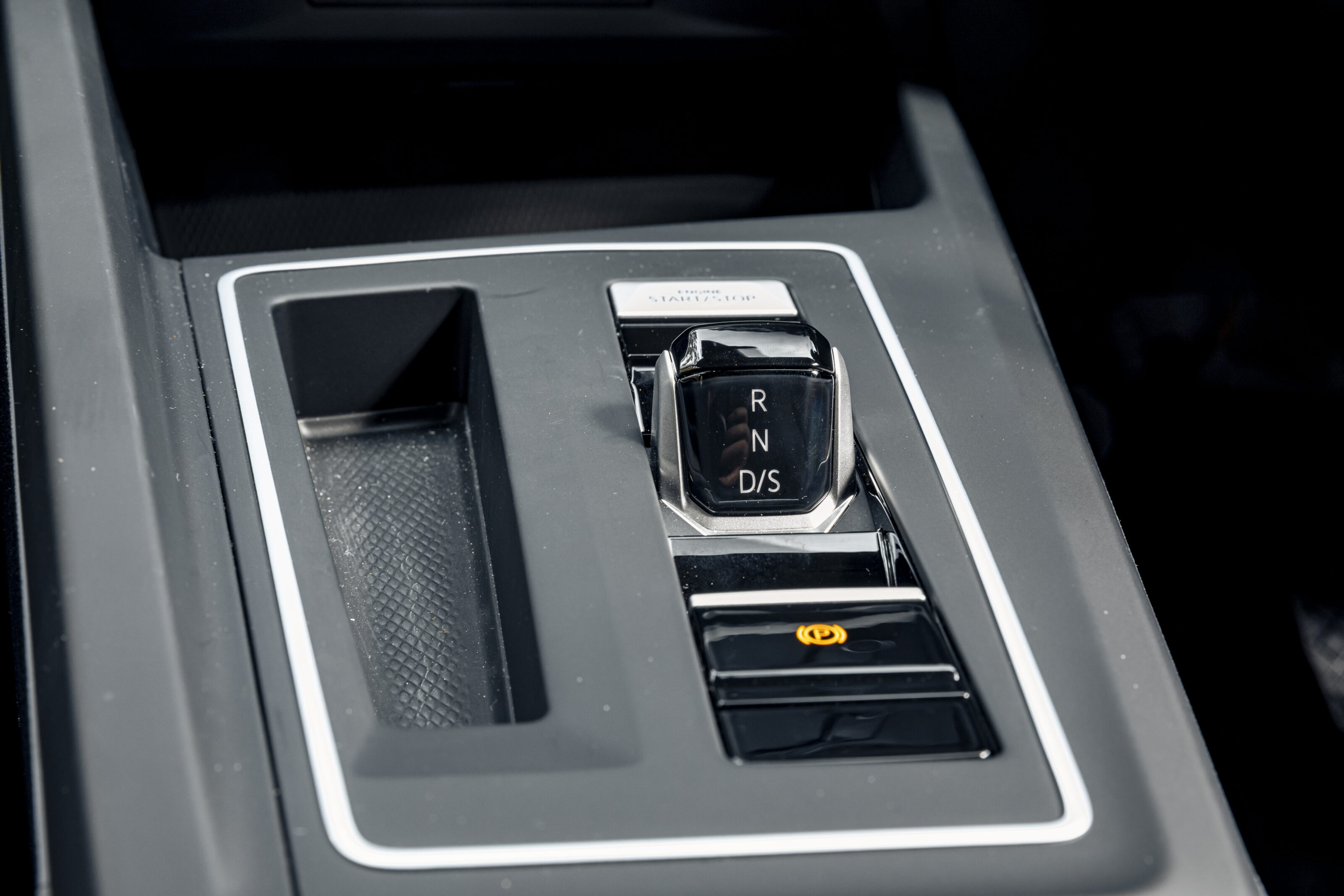
Ironically, the aggressive start/stop system almost mimics the old DSG moving into first gear as it jolts eagerly into life, but from there it’s a smooth unit – especially when left to its own devices. A Sport mode is available, as are steering wheel-mounted paddles, but it doesn’t really match the calming nature of the Golf. Best to avoid it.
An added benefit to the eight-speed auto (over the six-speed manual) is lower combined fuel consumption. The auto ’box achieves an impressive 5.8L/100km (0.2 litres better than the three-pedal option). And it’s a realistic marker, too, with our road testing returning 6.7L/100km without focusing on efficiency at all.
What is new for the eighth-gen Golf is a move away from a dual-clutch transmission to an eight-speed torque-converter automatic – a Japanese-built Aisin unit
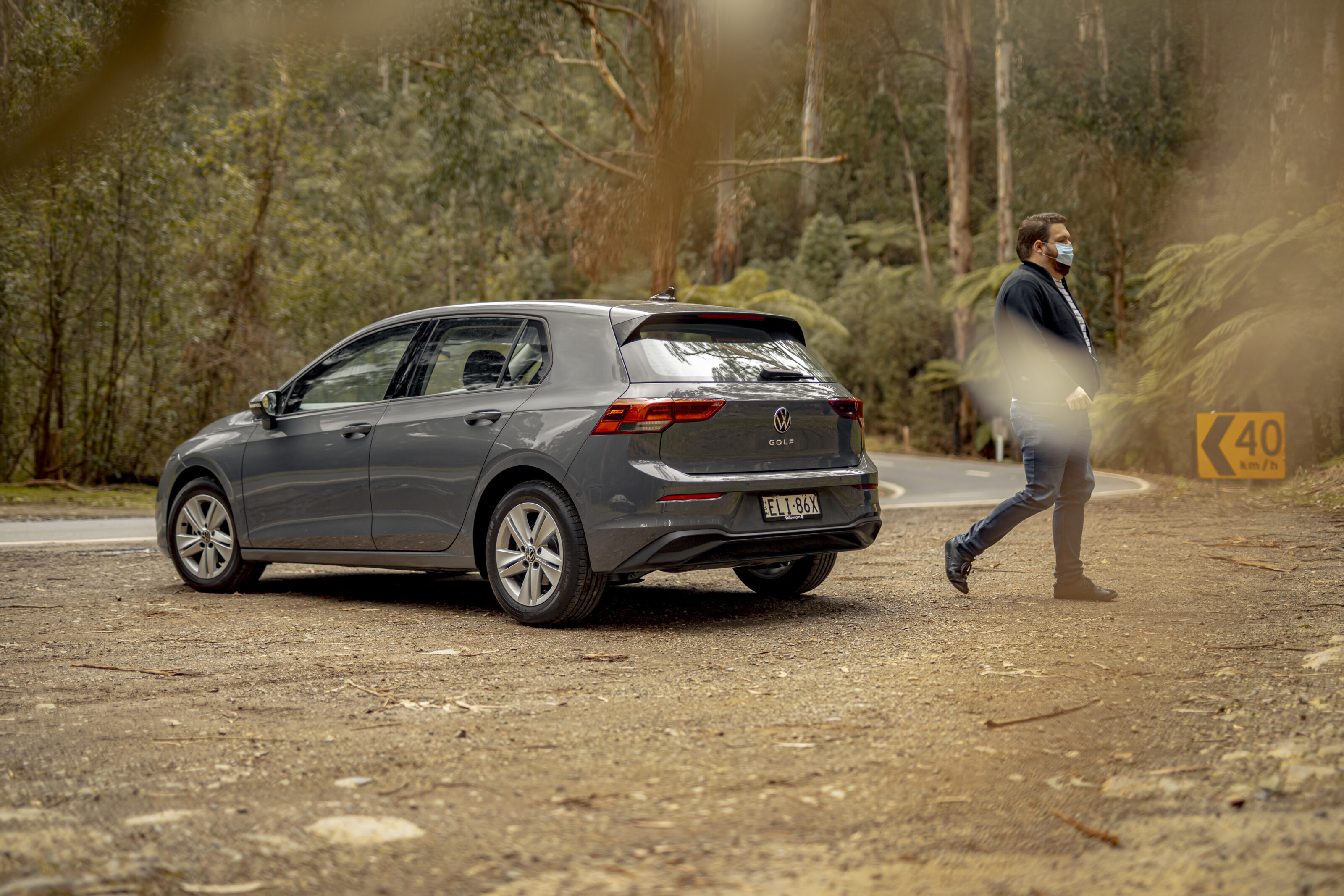
In terms of running costs, Volkswagen offers either a five-year ($2100) or three-year ($1200) capped-price servicing plan. Choosing the former also includes the first scheduled visit for free. As for the warranty, it’s an industry standard five-year, unlimited kilometre deal.
In trying to surpass its own high watermark by introducing touch-sensitive tech, VW has taken a step back in ergonomics. Keep your eyes peeled for the Mk8.5 because it’ll be interesting to see if this path remains. Some also won’t stomach the base model’s price rise, either.
However, the abundant standard safety kit should be thoroughly applauded. That, as well as the fact the new generation retains its premium edge, pragmatism and assuring dynamics. The fact there’s enough ‘Golfness’ still in the mix means the Mk8 Golf hits its, ahem, mark.
Score breakdown
Things we like
- Loaded safety kit
- Efficient powertrain
- Comfort
Not so much
- Higher entry price
- Ergonomic issues
- Staid styling


